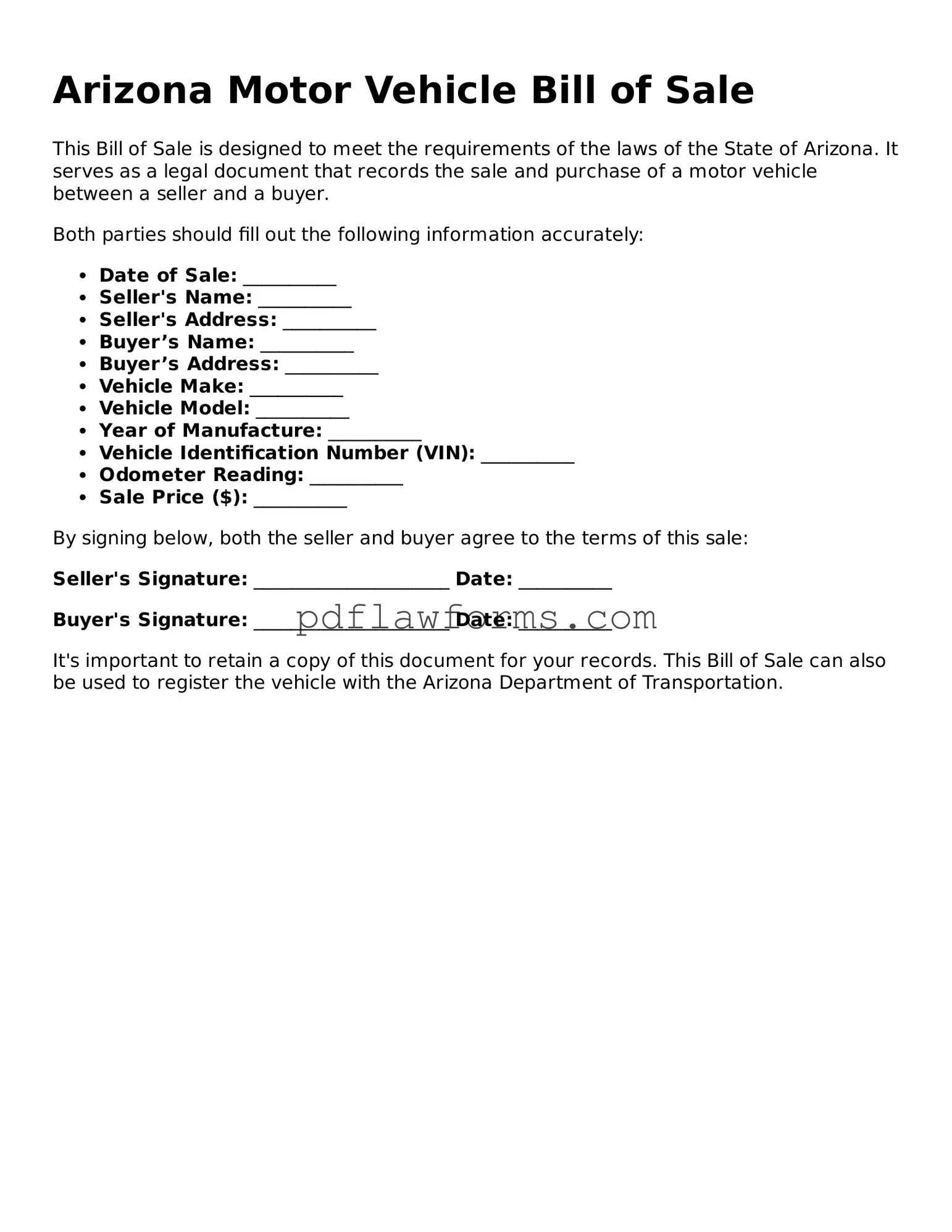When completing the Arizona Motor Vehicle Bill of Sale form, many people inadvertently make mistakes that can lead to complications down the line. One common error is failing to provide all necessary information. This includes not only the names and addresses of both the buyer and seller but also the vehicle's details, such as the VIN (Vehicle Identification Number) and the make and model. Omitting any of this information can result in delays or issues with registration.
Another frequent mistake is not signing the form. Both parties must sign the Bill of Sale to validate the transaction. If one party forgets to sign, it could lead to disputes about ownership later on. Always double-check that both signatures are present before submitting the document.
People often overlook the importance of the date. Not dating the Bill of Sale can create confusion regarding when the sale took place. This date is crucial for establishing the timeline of ownership and can affect things like taxes and registration.
Errors in the vehicle description are also common. Some individuals might incorrectly list the model year or provide an inaccurate VIN. Such mistakes can lead to significant issues with the vehicle's title transfer. It's essential to verify that all details match the vehicle's registration and title documents.
Another mistake is failing to include the sale price. This information is not just a formality; it can impact sales tax calculations. Without a clear sale price, the buyer may face unexpected fees when registering the vehicle.
People sometimes forget to include any relevant disclosures about the vehicle's condition. If there are known issues or if the vehicle is being sold "as is," this should be clearly stated. Transparency can prevent misunderstandings and protect both parties in the future.
Some individuals neglect to make copies of the completed Bill of Sale. Keeping a copy for personal records is important for both the buyer and seller. This documentation can serve as proof of the transaction if any questions arise later.
Additionally, some may not check the form for completeness before submitting it. A quick review can catch any mistakes or missing information, saving time and potential headaches later on.
Lastly, not understanding the specific requirements for notarization can lead to problems. While notarization is not always necessary for a Bill of Sale in Arizona, certain situations may require it. Knowing the rules can help ensure that the document is valid and accepted by the DMV.
